Urumqi Travel Guide
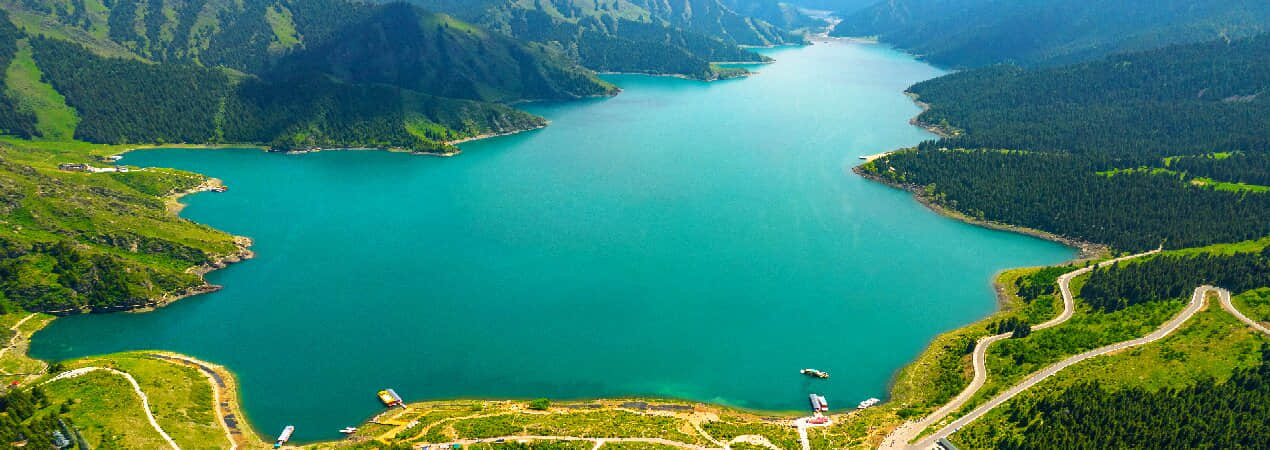
Urumqi is endowed with alpine ice and snow landscapes, mountain forest landscapes and grassland landscapes, providing rich content for tourists' sightseeing and adventure. The cultural arts, customs and traditions of various ethnic groups form a unique ethnic cultural tourism landscape. As the city farthest from the ocean in the world, Urumqi has a mid-temperate continental arid climate. The hottest months are July and August, while the coldest month is January, and its average temperature is -15.2℃.
- English Name: Urumqi
- Chinese Name: 乌鲁木齐(wū lǔ mù qí)
- Government: Capital city of Xinjiang Uygur Autonomous Region
- Location: Northwest of China (43°45′N - 45°00′N, 86°37′E - 88°58′E)
-
Area code & Zip Code:
Area Code: 0991; Zip Code: 830000 - Airports:Urumqi Diwopu International Airport (URC)
-
Railway Stations:
Urumqi Station,Urumqi South Station,Urumqi East Station -
Suburban Districts:
Midong, Tianshan, Shayibake, Xinshi, Shuimogou, Toutunhe, Dabancheng, Urumqi County - Population: about 4 million
Best Time to Visit Urumqi
May to October is the golden season for tourism in Urumqi because during this period, flowers and trees are in full bloom, and fruits and vegetables are fragrant. Urumqi is the city farthest from the ocean in the world, with a mid-temperate continental arid climate. The hottest month is July, with an average temperature of 26°C; the coldest month is January, with an average temperature of -15°C, and there is a large temperature difference between morning and evening. It is recommended to go in September, when the temperature is comfortable.
What to See
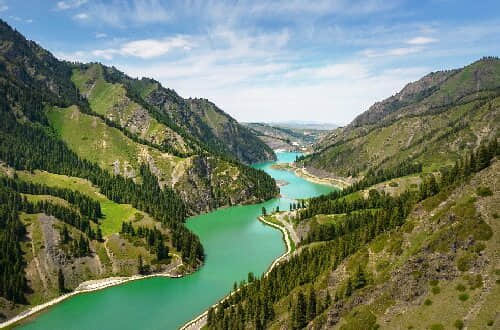 Tianshan Grand Canyon
Tianshan Grand Canyon1. Tianshan Grand Canyon: The vast expanse of the Tianshan Grand Canyon Scenic Area boasts abundant tourism resources, including continuous towering mountains with steep forested slopes, holy snow-capped peaks and glaciers, mysterious virgin forests, vast valley grasslands, crisscrossing canyon rivers and rich nomadic customs. It encompasses all natural landscapes in Xinjiang except deserts.
2. Hongshan Park Scenic Area: Urumqi Hongshan Park is a natural mountain landscape park. It is named "Hongshan"(Red Mountain) because the cliff at the west end of the mountain is ochre red in color. The park seamlessly integrates natural scenery, cultural landscapes, historical heritage and recreational activities, offering visitors a comprehensive experience that combines sightseeing, fitness and entertainment.
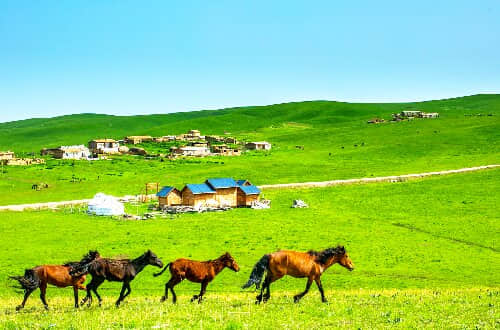 Nanshan Scenic Spot
Nanshan Scenic Spot3. Nanshan Scenic Spot: The Nanshan Scenic Spot refers to a region approximately 50 kilometers wide along the northern slope of the Tianshan Mountains, south of Urumqi. It is a scenic area characterized by ice and snow, forested grasslands, unique rock formations and alpine forest-pastoral areas, integrating modern cultural landscapes.
Recommended attractions:
| Tianshan Grand Canyon | Tianshan Heaven Lake | Nanshan Scenic Spot |
| Shuimogou Scenic Spot | Hongshan Park Scenic Area | Xinjiang International Grand Bazaar |
How to Get There
At present, Urumqi has only one airport — Urumqi Diwopu International Airport (URC). Flights within Xinjiang from Urumqi Airport reach cities such as Korla, Kashgar, Hotan, Karamay, and Altay. Domestic trunk routes directly connect to major cities across China, including Beijing, Shanghai, Guangzhou, Chengdu, and Qingdao.
How far is Urumqi from Major Cities
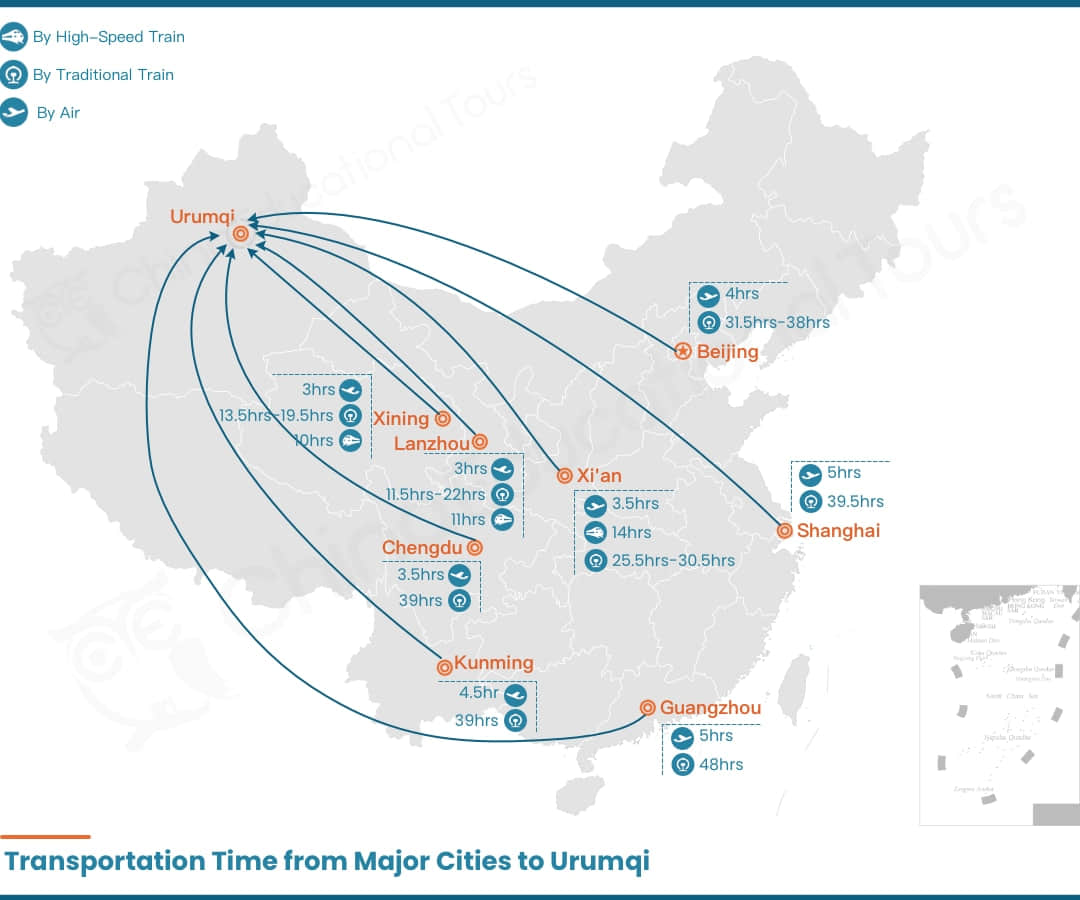
| Cities | Distance from Urumqi (km) | By Air to Urumqi | By High-Speed Railway to Urumqi | By Traditional Train to Urumqi |
|---|---|---|---|---|
| Beijing | 2812 | 4hrs | No direct high-speed train | 31.5hrs-38hrs |
| Shanghai | 3981 | 5hrs | No direct high-speed train | 39.5hrs |
| Guangzhou | 4207 | 5hrs | No direct high-speed train | 48hrs |
| Xining | 1797 | 3hrs | 10hrs | 13.5hrs-19.5hrs |
| Xi'an | 2527 | 3.5hrs | 14hrs | 25.5hrs-30.5hrs |
| Chengdu | 2814 | 3.5hrs | No direct high-speed train | 27.5hrs-35hrs |
| Kunming | 3566 | 4.5hrs | No direct high-speed train | 39hrs |
| Lanzhou | 1907 | 3hrs | 11hrs | 11.5hrs-22hrs |
How far is Urumqi from Other Xinjiang Cities
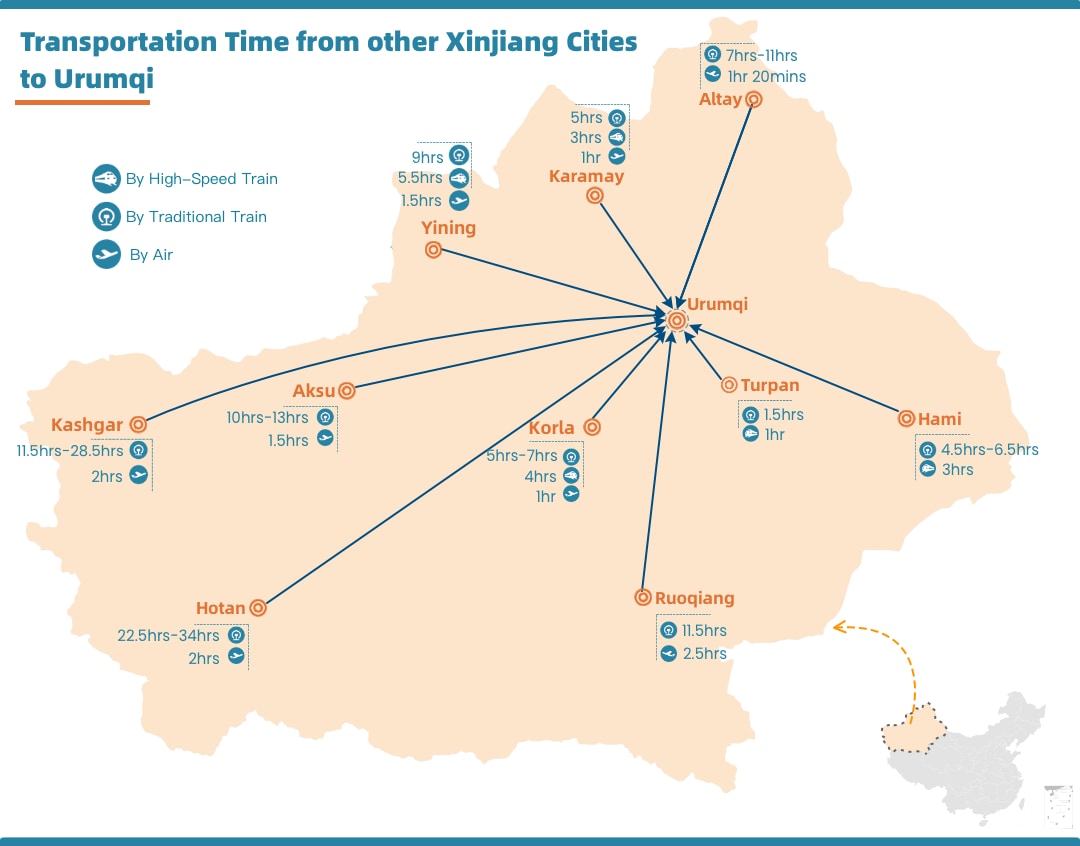
| Cities | Distance from Urumqi (km) | By Air to Urumqi | By High-Speed Railway to Urumqi | By Traditional Train to Urumqi |
|---|---|---|---|---|
| Kashgar | 1475 | 2hrs | No direct high-speed train | 11.5hrs-28.5hrs |
| Hotan | 1418 | 2hrs | No direct high-speed train | 22.5hrs-34hrs |
| Aksu | 1017 | 1.5hrs | No direct high-speed train | 10hrs-13hrs |
| Turpan | 200 | No direct flights | 1hr | 1.5hrs |
| Hami | 645 | No direct flights | 3hrs | 4.5hrs-6.5hrs |
| Korla | 482 | 1hr | 4hrs | 5hrs-7hrs |
| Altay | 500 | 1hr 20mins | No direct high-speed train | 7hrs-11hrs |
| Yi'ning | 691 | 1.5hrs | 5.5hrs | 9hrs |
Gourmet Food Recommendations
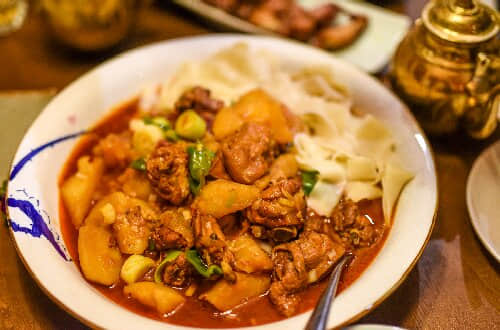 Xinjiang Dapanji (Big Plate Chicken)
Xinjiang Dapanji (Big Plate Chicken)Xinjiang Dapanji (Big Plate Chicken) originated in the early 1990s. It is mainly made of chicken and potato cubes, cooked with noodles. Xinjiang Dapanji is colorful, with spicy chicken and soft potatoes, and it is delicious.
Grilled mutton skewers are the most distinctive foods in Xinjiang. Unlike those in other places, the mutton skewers here are roasted on a special barbecue iron trough. When making them, they are roasted over a coal fire while condiments such as refined salt, chili powder, and cumin powder are sprinkled on. The meat is delicious, and the price is very reasonable.
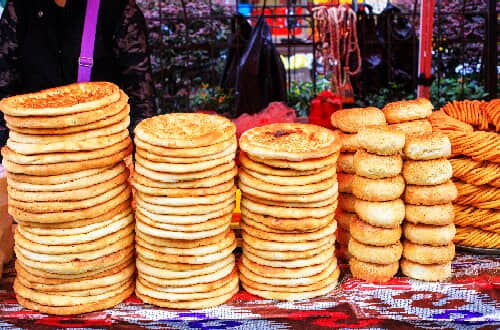 Naan
NaanHand-pulled rice (Polu) is a top-notch delicacy for locals to entertain guests. The main ingredients are rice, mutton, carrots and onions. The rice stewed with these ingredients is fragrant and delicious.
Naan is a traditional pasta loved by people of all ethnic groups in Xinjiang. Its outer skin is golden, crispy, and delicious. It is made of fermented dough baked in a naan pit. The round naan symbolizes beauty and prosperity. Therefore, when people eat naan wrapped with meat, they cut the naan into pieces, pour the cooked gravy on it, and share it with each other, which represents the beautiful meaning of sharing happiness.
Souvenir and Shopping
Xinjiang Handmade Carpets: Xinjiang's handmade carpets are renowned for their exquisite weaving techniques and rich cultural connotations. You can choose carpets of different styles and colors as home decorations.
Uygur Embroidered Caps: The Uygur embroidered cap is a traditional ethnic costume in Xinjiang, featuring various colorful patterns embroidered on it. It can be used as a souvenir or a gift for family and friends.
Hotan Jade: Urumqi is an important distribution center for Hotan jade. You can purchase a variety of exquisite Hotan jade ornaments such as bracelets and pendants. These jade articles are not only elegant in appearance but also have high collection value.
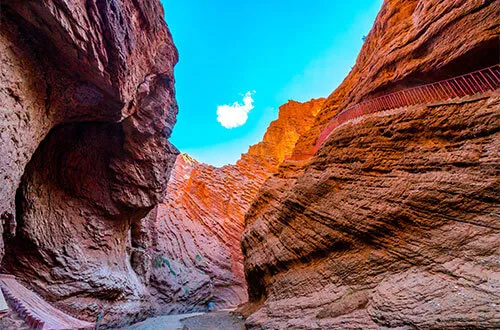 In-depth Tour of South Xinjiang
In-depth Tour of South Xinjiang 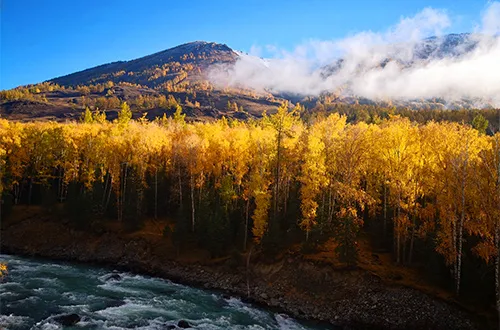 Discover North Xinjiang with Kanas Lake
Discover North Xinjiang with Kanas Lake 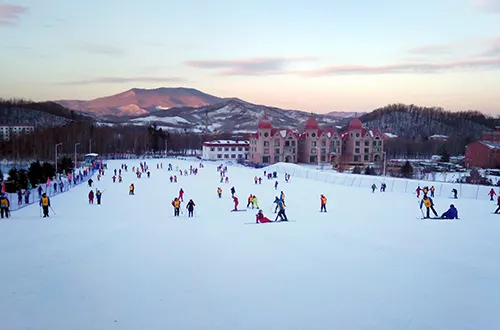 Xinjiang Ski and City Highlights Tour
Xinjiang Ski and City Highlights Tour 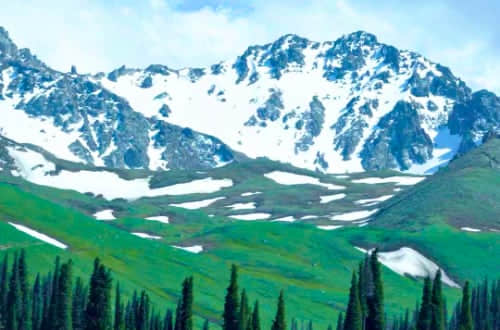 Xinjiang Attractions
Xinjiang Attractions